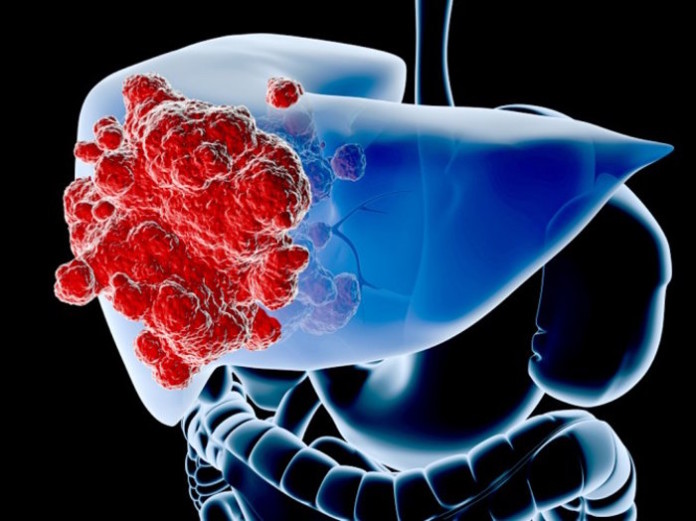Hepatocellular carcinoma, the most common type of liver cancer, is increasing in incidence in the United States, and infection with the Hepatitis B virus (HBV) causes about 50 percent of cases. However, it can be difficult to identify who is most likely to develop this cancer. Although earlier research had discovered molecular signatures associated with HBV-driven liver cancer, new research from Thomas Jefferson University has proven that this panel of microRNAs can also predict the patients at high risk for developing the disease before the cancer develops, via a blood test.
The researchers, led by Hushan Yang, Ph.D., an Associate Professor of Medical Oncology and researcher at the Sidney Kimmel Cancer Center at Jefferson studied a large cohort of HBV-infected patients, some of whom eventually developed liver cancer, and analyzed their molecular signature from blood samples. Of the 373 HBV patients who were originally cancer free, 40 developed cancer over a median follow up of 4.5 years. The researchers analyzed a panel of 24 microRNAs — small molecules that regulate gene activity — and showed that 15 of these microRNAs had changed their normal gene expression pattern before patients developed cancer, suggesting these molecules could be used to predict patients with a high likelihood of developing cancer. The study was published in the journal Oncotarget.
Earlier studies had identified the 24 microRNAs that Dr. Yang and colleagues studied. However, it was unclear whether those microRNAs caused the cancer, or were a result of already occurring cancerous processes. By following this cohort of patients prospectively, and using blood samples taken at least one year before liver cancer diagnosis, the researchers were able to answer that question for the first time. In addition, prior studies analyzed samples taken from patient biopsies, which require invasive procedures, whereas the current study showed that microRNAs circulating in the blood could predict disease.
“This research confirms previous work on microRNAs and liver cancer and goes further to show that these microRNAs may be able to predict the development of liver cancer through a non-invasive blood test,” says first author Chun Wang, a visiting scholar in the Department of Medical Oncology.
The current non-invasive test for determining cancer risk among HBV patients is a diagnostic for the molecule alpha-fetoprotein (AFP). It is also associated with Hepatitis C infections, but it isn’t always a good predictor of disease. In fact, the Jefferson researchers identified 15 out of 16 patients, or 94 percent of patients who were misclassified as cancer-free by AFP. Likewise, in the 57 patients who were deemed at high risk of developing liver cancer by AFP, the microRNA testing correctly reclassified 33, or 58 percent, as low risk.
Although the panel of 15 microRNAs was useful, it wasn’t perfect. “We need to find more microRNAs that may predict liver cancer in order to sharpen this tool for identifying high risk patients,” says Dr. Yang. “Through collaboration with Dr. Hann in the Department of Medicine at Jefferson, we continue to work on improving this diagnostic method.”
The work was supported by a Tobacco Grant from the Pennsylvania Department of Health, National Cancer Institute Grant CA159047, American Cancer Society Research Scholar Grant 123741-RSG-13-003-01-CCE, and a V Scholar Grant from the V Foundation for Cancer Research. The authors report no conflicts of interest.
Source: Jefferson.edu


































